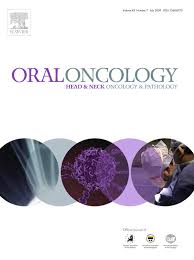Refining the definition of mandibular osteoradionecrosis in clinical trials: The cancer research UK HOPON trial (Hyperbaric Oxygen for the Prevention of Osteoradionecrosis)
Abstract
Mandibular osteoradionecrosis (ORN) is a common and serious complication of head and neck radiotherapy for which there is little reliable evidence for prevention or treatment. The diagnosis and classification of ORN have been inconsistently and imprecisely defined, even in clinical trials.A systematic review of diagnosis and classifications of ORN with specific focus on clinical trials is presented. The most suitable classification was evaluated for consistency using blinded independent review of outcome data (clinical photographs and radiographs) in the HOPON trial.Of 16 ORN classifications found, only one (Notani) appeared suitable as an endpoint in clinical trials. Clinical records of 217 timepoints were analysed amongst 94 randomised patients in the HOPON trial. The only inconsistency in classification arose where minor bone spicules (MBS) were apparent, which occurred in 19% of patients. Some trial investigators judged MBS as clinically unimportant and not reflecting ORN, others classified as ORN based on rigid definitions in common clinical use. When MBS was added as a distinct category to the Notani classification this ambiguity was resolved and agreement between observers was achieved.Most definitions and clinical classifications are based on retrospective case series and may be unsuitable for prospective interventional trials of ORN prevention or treatment. When ORN is used as a primary or secondary outcome in prospective clinical trials, the use of Notani classification with the additional category of MBS is recommended as it avoids subjectivity and enhances reliability and consistency of reporting.

